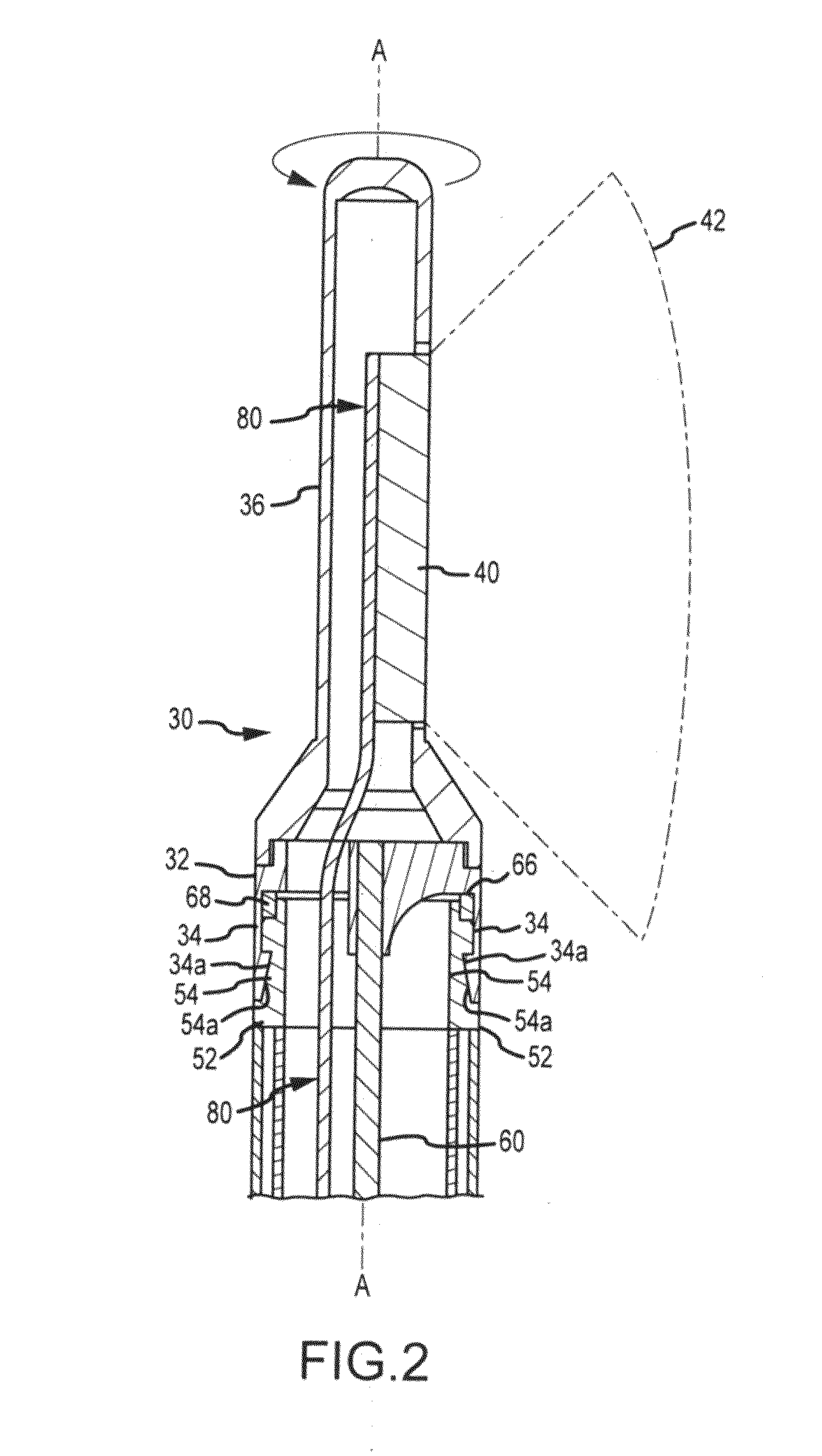Imaging catheter with rotatable array
a technology of ice catheter and rotating array, which is applied in the field of ice catheters, can solve the problems of limited use of ice catheters, limited current ice catheter technology, and large user time spent becoming facile with catheter steering mechanisms, etc., and achieves sufficient aperture size and corresponding image resolution, and facilitates more complex procedures.
- Summary
- Abstract
- Description
- Claims
- Application Information
AI Technical Summary
Benefits of technology
Problems solved by technology
Method used
Image
Examples
Embodiment Construction
[0059]FIGS. 1-3 illustrate one embodiment of an imaging catheter 1. The imaging catheter 1 may include a catheter body 10 and a distal end portion 30 supported by and selectively rotatable relative to a distal end of the catheter body 10 at an interface therebetween.
[0060]As shown in FIG. 2, the distal end portion 30 of the catheter 1 may include a first interface member 32 and a housing member 36 supportably interconnected to the first interface member 32. In turn, a transducer array 40 (e.g., an ultrasound transducer array) may be rotatably supported by the distal end portion 30. The transducer array 40 may be provided to have a predetermined imaging field 42. The predetermined imaging field 42 may be selectively rotated about axis AA. In the illustrated embodiment, axis AA coincides with a central axis of the distal end portion 30 and a central axis of the catheter body 10.
[0061]To facilitate the selective rotation of the distal end portion 30, a rotatable drive member 60 may be ...
PUM
 Login to View More
Login to View More Abstract
Description
Claims
Application Information
 Login to View More
Login to View More - R&D
- Intellectual Property
- Life Sciences
- Materials
- Tech Scout
- Unparalleled Data Quality
- Higher Quality Content
- 60% Fewer Hallucinations
Browse by: Latest US Patents, China's latest patents, Technical Efficacy Thesaurus, Application Domain, Technology Topic, Popular Technical Reports.
© 2025 PatSnap. All rights reserved.Legal|Privacy policy|Modern Slavery Act Transparency Statement|Sitemap|About US| Contact US: help@patsnap.com



